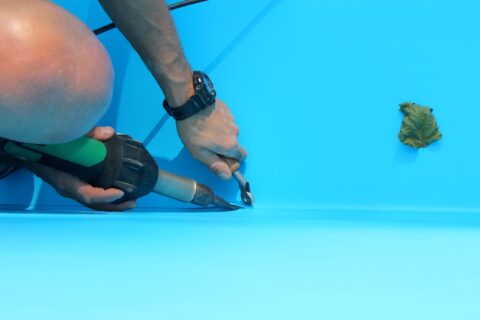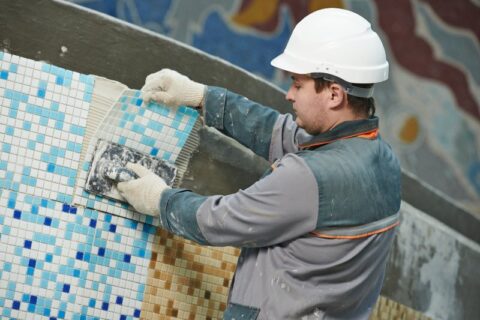Why Do Concrete Swimming Pools Crack?
In-ground concrete swimming pools are usually durable installations that last for decades. However, gunite, shotcrete, or concrete walls may develop cracks over time. Small shrinkage cracks aren’t a problem, but if the cracks grow large enough to insert a dime, the shell might be compromised. Here are 11 reasons why a concrete pool might crack.
- Hillside installation: Gravity causes soil to slowly creep downhill, so installing a pool on a hillside should always be avoided.
- Changes in soil moisture content: Expansive soil that swells in flood conditions can heave the shell upward. Alternately, soil that is usually wet can dry out and shrink during a drought, causing the pool to settle and crack.
- Hydrostatic pressure: Changes in groundwater levels can lift or tilt a concrete pool slightly. If the movement is substantial enough, the shell may crack. Hydrostatic relief plugs aim to prevent this.
- Poor forming during installation: If the pool is not properly laid out with stakes and forms, the shell could develop hidden voids or air pockets that compromise its structural integrity.
- Repacking overspray during installation: Overspray is the excess concrete that spills over the edge of the form. Knowledgeable builders know not to pack overspray back into the pool because it has lost its compressive strength.
- Improper plumbing installation: Some PVC pipes must run through the concrete shell to connect pool returns, but they should be minimized as much as possible. Plumbing in the pool floor, or horizontal pipes in the walls, could create weak spots and increase the risk of cracking.
- Poorly installed rebar: Using reinforcement bars of different sizes, installing them at irregular intervals, or failing to install them in the center of the concrete can lead to symmetrical pool cracking.
- Poorly mixed and applied concrete: The strength of a concrete pool depends largely on the mixing and application process. Concrete must have the proper water-to-cement ratio and the right amount and type of aggregate. Crumbling edges or rapidly deteriorating cracks can often be attributed to poor mixing and application.
- Insufficient cure time: Concrete pools typically need at least 14 days to cure. Rushing the process or pouring the concrete when it’s too hot outside can cause cracking.
- Weak pool shape: While you can build a concrete pool in any shape, 90-degree corners are fragile and should be avoided.
- Improperly applied expansion joint: Most concrete pools feature an expansion joint to compensate for temperature expansion and contraction. However, if this joint is not true or becomes filled with debris, a horizontal crack could form through the tile band.
If you suspect your concrete pool is leaking for any reason, call Millennium Pool Service for help. We have the experience and tools necessary to perform complex leak detection and repair, drawing on sonar technology, dye testing, static testing, and pressure testing to confidently find leaks in the concrete or plumbing lines. For more help, please contact us at 703.939.5062 in Virginia or 301.591.3750 in Maryland.


